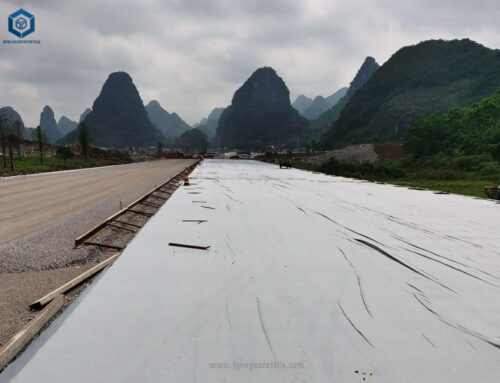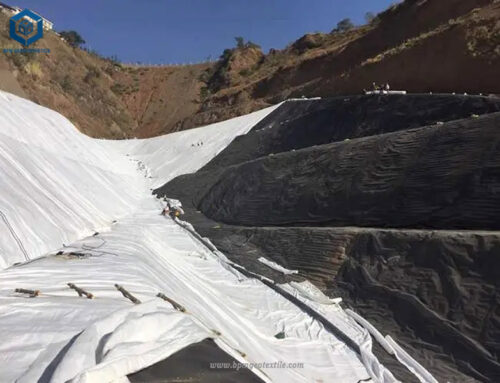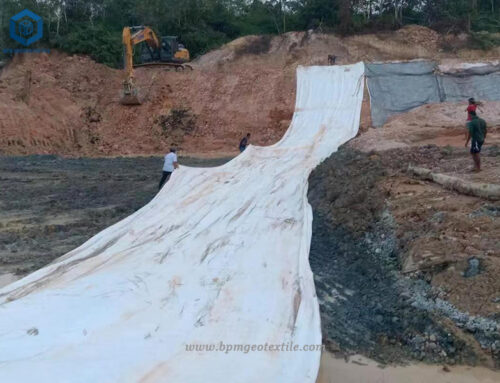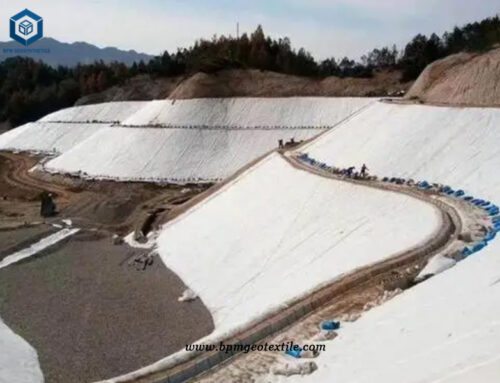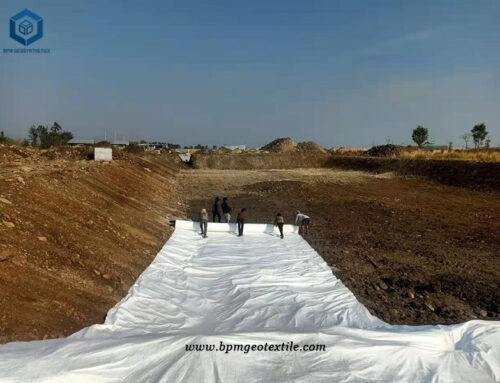Geotextile and geomembrane are geosynthetic products widely used in civil engineering projects, including waste treatment, road construction, landfill, mining and energy industries. HDPE geomembrane is an ideal anti-seepage lining material for farms, water enclosures, containment, landfills and other projects. Geotextile fabric have the functions of filtration, drainage, separation, protection and reinforcement. Generally speaking, geotextiles can be divided into woven geotextiles and non-woven geotextiles. Among them, non-woven geotextiles are often used in landfill projects to protect HDPE geomembrane linings from being punctured and damaged. Filament polyester geotextile is made of polyester long fibers that are networked and consolidated, and have a three-dimensional structure. It is a new type of material in geotechnical engineering. In addition to good tensile strength and puncture resistance mechanical properties, filament polyester geotextile also has good drainage capacity, acid and alkali resistance and anti-aging properties.The good performance makes geomembrane and geotextile widely used in various construction sites, they are often combined together to perform synthetic functions.
San Diego faces a growing problem of solid waste management. According to the survey, the amount of local garbage has exploded in recent years. These problems can be attributed to the explosion in consumption of many commodities, including food packaging, caused by high population density, as well as the increased use of various single-use items. Packaging materials also often contain materials that are harmful to the environment. If these wastes are not managed effectively, densely populated urban areas will face a growing waste problem. With a growing population, rising per capita consumption and increasing urbanization, Chile faces two major problems in waste management. One is the rapid increase in the amount of waste generated; the other is the change in the composition of waste.
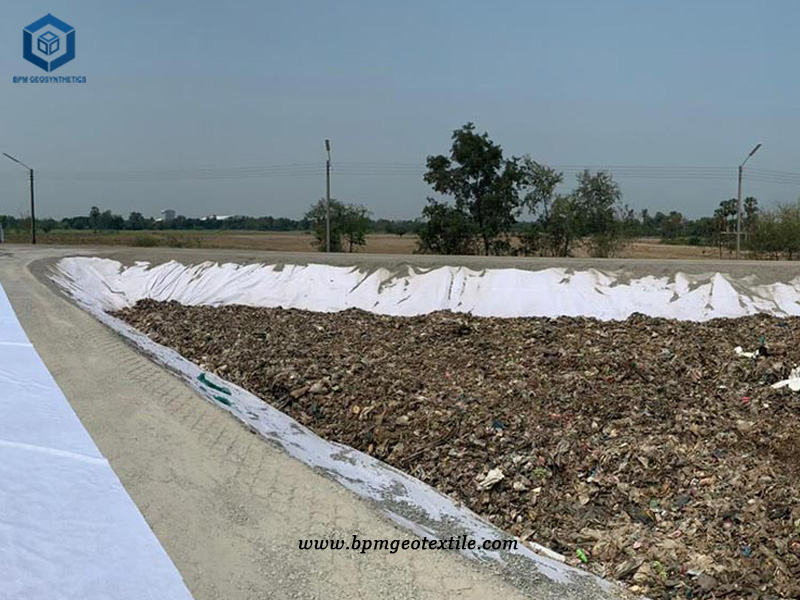
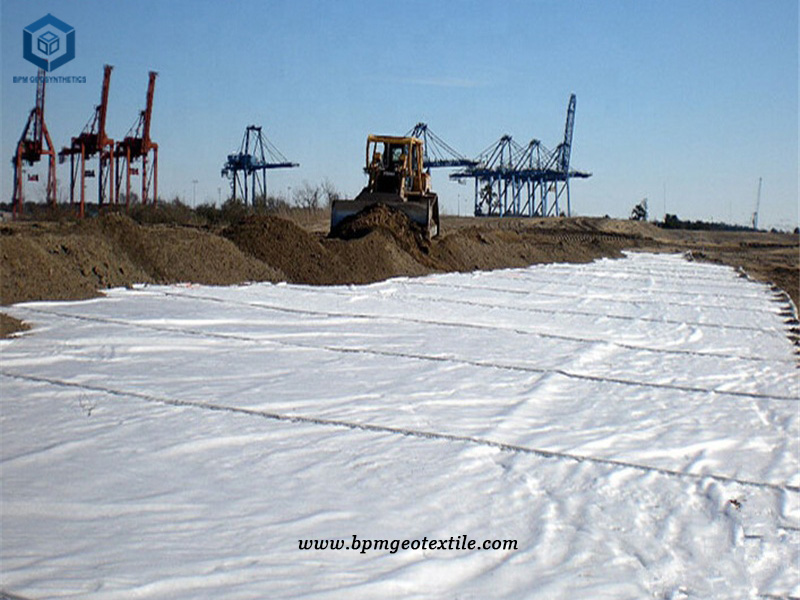
The landfill project includes a centralized waste storage site under the sanitary landfill method. The sanitary landfill is widely used in the world because of its low cost and good hygiene. The landfill generally adopts the method of layered landfill to deal with the garbage. A layer of garbage is piled up and then covered with a layer of loess, which can easily reduce the pollution of the garbage. Landfill construction includes procedures for site selection, design and construction, landfill waste entry conditions, operation, closure, post-maintenance and management, and pollutant control and monitoring.
We received information from a client in Chile who wanted to build a landfill using a cost-effective and environmentally safe construction method. At the same time, beautify the surface, The geosynthetic materials can provide soil for vegetation to grow, and promote the reuse of landfill land. According to the customer’s request, we recommended the HDPE geomembrane and filament polyester geotextile produced by our company to the customer, and we showed the customer some of our previous construction cases of landfills in different countries.
In this regard, our BPM engineer recommended that customers chose filament polyester geotextile with a weight of 500g/m2 and HDPE geomembrane with a thickness of 1.0mm, which could strengthen the soil by increasing the tensile strength. In the early stage, after receiving the customer’s information, we mailed samples of 2 square meters of filament polyester geotextile and geomembrane to the customer for free. After receiving the sample, the customer sent it to the local testing agency in Chile for some professional testing, testing agency affirmed the quality of our products. In confirming the construction area with the customer, as well as some construction details and so on. And after waiting for the customer’s payment, we immediately produced 50,000 square meters of filament polyester geotextile and geomembrane of the same area. HDPE geomembrane has excellent anti-seepage and isolation functions, while filament polyester geotextile plays the role of protecting HDPE geomembrane and the secondary anti-seepage function of the main body of the system, and filament polyester geotextile has good reverse filtration water permeation function, which can effectively isolate the waste in the lower layer. The filament polyester geotextile isolates the landfill garbage above it to prevent it from directly contacting the soil and groundwater, and at the same time the generated leachate is kept on the upper layer of the HDPE geomembrane and will not pollute the groundwater. Because these two products are easy to transport, simple to construct and low cost, they play an irreplaceable key role in landfill engineering.
The advantages of filament polyester geotextile in Landfill
Polyester filament geotextile is made by the method of polyester filament forming and consolidation. Its fibers are arranged into a three-dimensional structure. It is a new building material in geotechnical engineering and civil engineering applications. In addition to the mechanical strength characteristics such as puncture, it also has good vertical and horizontal drainage performance, good elongation performance, and good chemical functions such as high biological resistance, acid and alkali resistance, and aging resistance. Polyester filament geotextile also has a wide pore size range, tortuous void distribution, good permeability and filtration performance. Light weight, good overall continuity, easy construction, high tensile strength and corrosion resistance.
The combination of HDPE geomembrane and polyester filament geotextile has high air tightness for landfill. Because the inner lining of the geomembrane is made of high-density polyethylene particles, the product itself has high water impermeability and air permeability, which can effectively block the breeding of flies and bacteria, and at the same time can ensure that the smell of garbage will not spread in the landfill. .
HDPE geomembrane has high impermeability as a landfill sealing membrane. The geomembrane placed on the garbage not only blocks the growth of flies and bacteria and the spread of garbage smell, but also blocks the infiltration of water such as rainwater and dew from the outside, preventing the pollution of groundwater.
HDPE geomembrane and polyester filament geotextile have very long service life as landfill sealing membrane. The geomembrane liner itself is not easily decomposed. It can live for more than 50 years if buried in the ground, and more than 10 years even when exposed outside
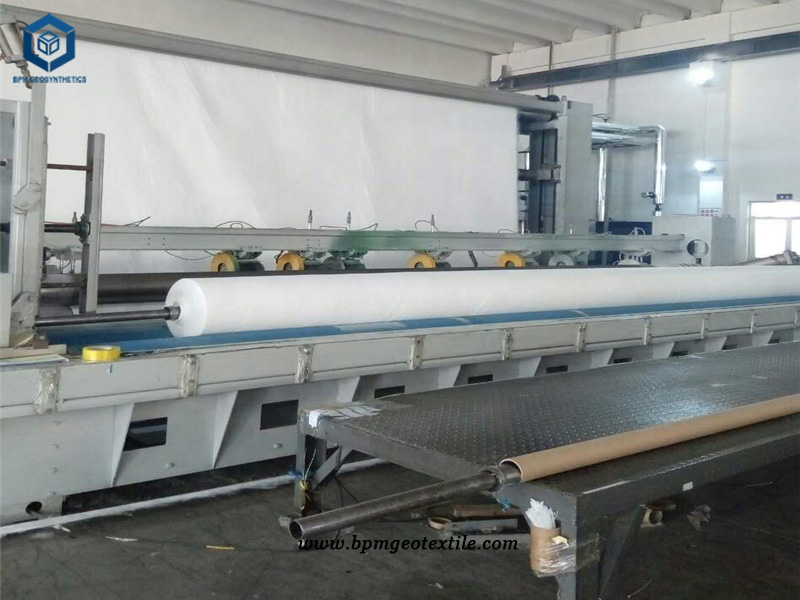
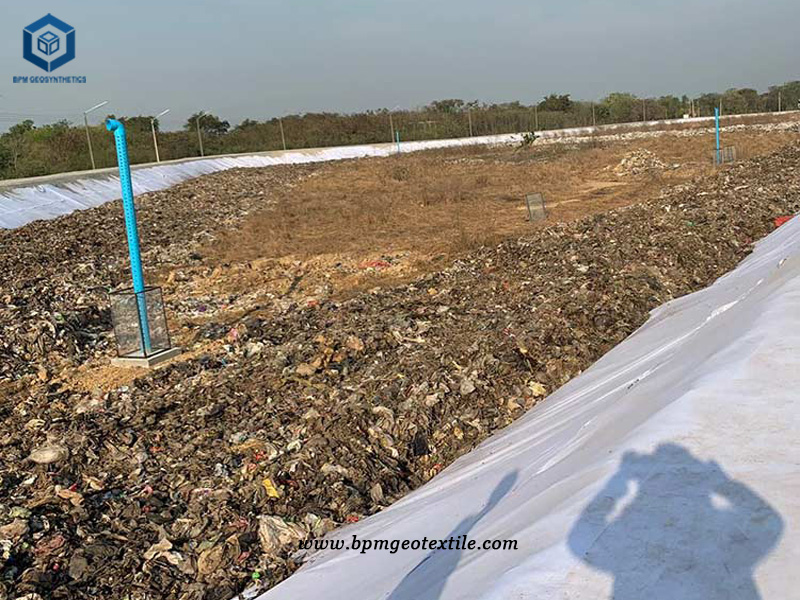
Application range of filament geotextiles
- Increase the stability of gravel slope and reinforced soil to prevent soil erosion and freezing damage of soil at low temperature
- Isolation layer between artificial soil filling, rockfill or material field and foundation, isolation between different frozen soil layers, back filtration and reinforcement
- The filter layer around the drainage underdrain or around the gravel drainage underdrain
- Vertical or horizontal drainage inside the earth dam, buried in the soil to dissipate pore water pressure
- Roads (including temporary roads), railways, embankments, airports and other projects to strengthen weak foundations
The laying process of geotextiles
- Any mechanical equipment used for laying geotextiles cannot be used directly on the already laid geotextiles.
- Do not spread too many geotextile rolls every day so as to exceed the reasonable sewing range.
- All exposed geotextile edges must be immediately pressed with sandbags or other approved heavy objects to prevent the geotextiles from being blown up by the wind and pulled out of the surrounding anchoring ditch. The geotextile may be blown up by the wind in strong wind conditions, and the laying of the geotextile should be prohibited at this time.
- When laying geotextiles on the slope, use the control method to anchor the geotextiles, and then lay them down. Uncontrolled unwinding methods such as “arbitrary descent” are not allowed. The method of laying must ensure that the geotextile and any other underlying geotextiles are not damaged.
- Use a hook knife specially designed for cutting geotextiles to cut geotextiles. The surrounding and underlying geotextile must be protected from damage during the cutting of the geotextile.
- The laying method of the geotextile must ensure that the geotextile or the underlying geotextile will not be folded or wrinkled. Anything that might cause other geomaterials to wrinkle, fold, or arch should be reapplied or cut and repaired to eliminate these problems.
- The installer must try to protect the laid geotextile to avoid possible damage caused by the construction machinery.
- The quality assurance engineer must inspect the laid geotextiles for foreign matter under the geotextiles, worn geotextile materials or improper seams. Any foreign material must be cleaned up. Any worn material and bad seams must be repaired.
Specification of Geotextile and Geomembrane for Landfill Project in Chile
- Construction site – Santiago, Chile
- Products used – 500g/㎡ filament polyester geotextile 1.0mm, HDPE geomembrane
- Application project – Landfill Project
About BPM
BPM manufactures and wholesales many types of effective and states of the art geotextile, geomembrane, and other geosynthetics to over 36 countries. BPM geosynthetic products are widely used across a variety of industries including waste containment, water containment, aquaculture, industrial project, energy project and mining projects, etc. BPM main customers are from Australia, France, Sweden, UK, Hungary, New Zealand, Poland, Mexico, Ecuador, Brazil, Pakistan, Bangladesh, Thailand, Vietnam, Malaysia, Indonesia, Singapore, Philippines, Sri Lanka, India, UAE, Saudi Arabia, Qatar, Kenya, etc.
BPM is not only manufacturing best quality geosynthetic products but also providing professional design and installation service. OEM, ODM, custom development and fabrication are also available. If you have any questions or inquiries, please fill and submit the following form, we will reply as soon as possible.

